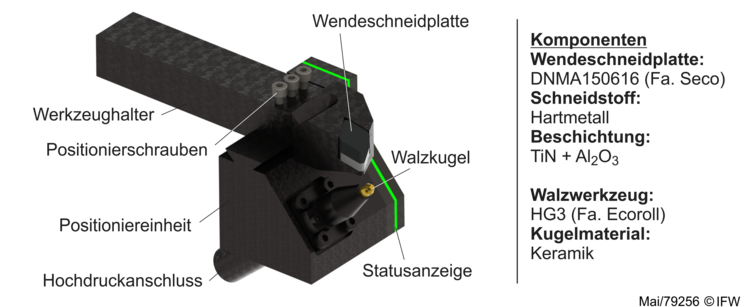Improvement of part life span by influencing the surface integrity machined with the hybrid process combination turn-rolling

| E-Mail: | kuhlemann@ifw.uni-hannover.de |
| Year: | 2018 |
| Date: | 05-03-18 |
| Funding: | DFG |
| Duration: | 11/17 - 10/20 |
The current state of the research shows that the mechanical surface strengthening process deep rolling is a suitable method for changing the properties of surface integrity to increasing the strength and lifespan of highly stressed components. A further increase in the lifespan can be reached by the combination of process temperature and deep rolling. However, this requires an additional process step and is therefore not widely used. This disadvantage can be eliminated by parallelization with cutting processes. Thus, the turn-rolling process is an efficient possibility for processing high-performance components. The overall objective of the planned project is the basic investigation and modeling of the mechanisms of action in combined thermomechanical processing for the purpose of targeted lifespan improvement through tailor-made properties of surface integrity. For this purpose, the targeted adjustment of the properties of surface integrity by thermal deep rolling is made possible. Subsequently, the mechanisms of action between the machining process and the temperature of the component are modeled so that the necessary thermal energy can be induced into the component through the machining process and allows thermal deep rolling. Based on this, bases for the adjustment of properties of surface integrity by the combined turn-rolling process are formed. Finally, the prolonged lifespan of components is demonstrated as a result of the turn-rolling process and a function of the temperature. These investigations are based on the hypothesis that not only higher residual stress values can be achieved at higher temperatures, but that these are also more stable than at lower temperatures.




















